Parts of male human body. Male Reproductive System: 7 Essential Organs and Their Functions
What are the key components of the male reproductive system. How do these organs contribute to reproduction. What is the role of hormones in male sexual development. How does sperm production occur. What are the main functions of the penis and scrotum. How do male reproductive organs work together for fertilization.
The Testes: Powerhouses of Sperm and Hormone Production
The testes, also known as testicles, are the primary male reproductive organs. Located outside the body in the scrotum, these oval-shaped glands play a crucial role in both sperm and hormone production.
How do the testes function? They serve two main purposes:
- Spermatogenesis: The production of sperm cells
- Hormone production: Primarily testosterone
Spermatogenesis occurs within the seminiferous tubules of the testes. This process begins at puberty and continues throughout a man’s life. The testes produce millions of sperm cells daily, ensuring a constant supply for reproduction.
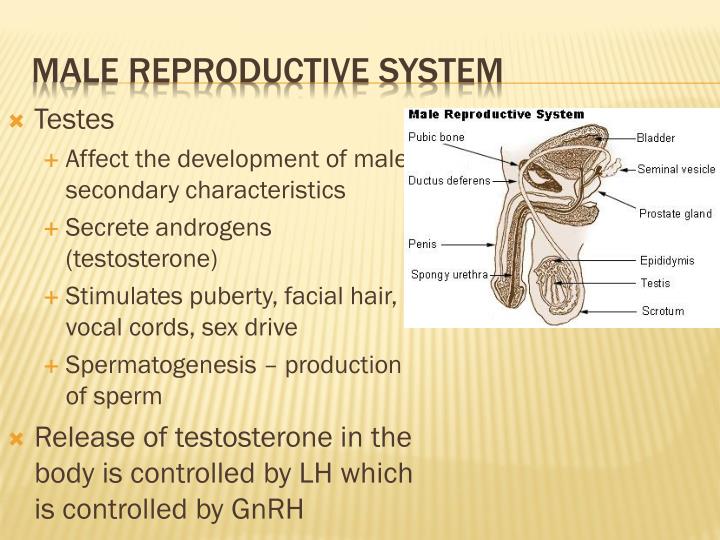
Testosterone, the primary male sex hormone, is produced by Leydig cells in the testes. This hormone is responsible for:
- Development of male secondary sexual characteristics
- Maintenance of libido
- Regulation of sperm production
- Muscle mass and bone density
The testes’ unique location outside the body serves a specific purpose. Sperm production requires a temperature slightly lower than the core body temperature. The scrotum helps regulate this temperature, ensuring optimal conditions for spermatogenesis.
The Epididymis: Storage and Maturation of Sperm
The epididymis is a highly coiled tube located on the posterior surface of each testis. This organ plays a crucial role in the male reproductive system by providing a site for sperm maturation and storage.
What happens to sperm in the epididymis? As sperm cells travel through this organ, they undergo several important changes:
- Maturation: Sperm cells gain the ability to swim and fertilize an egg
- Storage: The epididymis can store sperm for several weeks
- Concentration: Fluid is reabsorbed, concentrating the sperm
The epididymis is divided into three main regions:

- Head (caput): Where immature sperm first enter from the testes
- Body (corpus): The middle section where maturation continues
- Tail (cauda): The final portion where mature sperm are stored
During ejaculation, sperm cells are propelled from the tail of the epididymis into the vas deferens. This journey is facilitated by smooth muscle contractions within the epididymis walls.
The Vas Deferens: The Sperm Highway
The vas deferens, also known as the ductus deferens, is a long, muscular tube that connects the epididymis to the urethra. This structure serves as the primary conduit for sperm during ejaculation.
What is the function of the vas deferens? Its main roles include:
- Transport: Moving sperm from the epididymis to the urethra
- Storage: Providing additional space for sperm storage
- Contribution to semen: Adding fluid to the ejaculate
The vas deferens is approximately 30 cm long and has a thick muscular wall. During ejaculation, these muscles contract, propelling sperm forward at a rapid pace. This ensures that sperm reach the urethra quickly and efficiently.

Interestingly, the vas deferens is the target of vasectomy procedures. By cutting or blocking this tube, sperm are prevented from entering the ejaculate, resulting in male sterilization.
The Seminal Vesicles: Nourishing the Sperm
The seminal vesicles are a pair of glands located behind the bladder and above the prostate gland. These structures play a vital role in the production of seminal fluid, which makes up a significant portion of the ejaculate.
What do the seminal vesicles contribute to reproduction? Their primary functions include:
- Fluid production: Secreting a fructose-rich fluid that nourishes sperm
- Sperm motility: Enhancing sperm movement
- Semen coagulation: Providing proteins that cause semen to thicken after ejaculation
The fluid produced by the seminal vesicles accounts for about 60-70% of the total volume of semen. This alkaline secretion helps neutralize the acidic environment of the vagina, protecting sperm and increasing their chances of survival.
During ejaculation, the muscles surrounding the seminal vesicles contract, expelling their contents into the ejaculatory ducts. Here, the fluid mixes with sperm from the vas deferens and secretions from the prostate gland to form semen.

The Prostate Gland: The Semen Factory
The prostate gland is a walnut-sized organ located just below the bladder, surrounding the urethra. This gland plays a crucial role in the production of semen and the overall function of the male reproductive system.
What are the main functions of the prostate gland? It serves several important purposes:
- Semen production: Secreting a milky fluid that forms part of the semen
- Sperm protection: Producing substances that safeguard sperm
- Ejaculation control: Preventing urine from mixing with semen during ejaculation
The prostate gland produces about 20-30% of the total volume of semen. Its secretions contain several important components:
- Zinc: Essential for sperm health and motility
- Citric acid: Helps maintain the pH balance of semen
- Prostate-specific antigen (PSA): An enzyme that liquefies semen after ejaculation
During ejaculation, the prostate gland contracts, expelling its fluid into the urethra where it mixes with sperm and other secretions. The alkaline nature of prostatic fluid helps neutralize the acidity of the vaginal tract, improving sperm survival.

The Urethra: The Final Pathway
The urethra is a tube that runs from the bladder through the penis, serving as the final pathway for both urine and semen. In males, this structure plays a dual role in the urinary and reproductive systems.
How does the urethra function in male reproduction? Its main roles include:
- Semen transport: Providing a passage for semen during ejaculation
- Urination: Allowing for the expulsion of urine
- Erection support: Contributing to penile rigidity during erection
The male urethra is divided into three sections:
- Prostatic urethra: Passes through the prostate gland
- Membranous urethra: A short segment passing through the pelvic floor
- Penile (spongy) urethra: Runs through the penis to the external urethral orifice
During sexual arousal, the internal urethral sphincter closes, preventing urine from entering the urethra. This ensures that only semen is expelled during ejaculation. The urethra’s elastic properties allow it to expand during ejaculation, accommodating the flow of semen.

The Penis: The Organ of Copulation
The penis is the external male sex organ, serving as both a reproductive and excretory organ. Its primary functions in reproduction are to deliver sperm to the female reproductive tract and to act as a sensory organ during sexual intercourse.
What are the key components of the penis? The organ consists of several important structures:
- Corpora cavernosa: Two cylindrical chambers that fill with blood during erection
- Corpus spongiosum: A spongy tissue surrounding the urethra
- Glans penis: The sensitive tip of the penis
- Prepuce (foreskin): A retractable fold of skin covering the glans
How does the penis function during sexual activity? The process involves several stages:
- Erection: Blood fills the corpora cavernosa, causing the penis to become rigid
- Emission: Sperm and seminal fluid enter the urethra
- Ejaculation: Muscular contractions expel semen from the penis
The penis also contains numerous nerve endings, making it highly sensitive to sexual stimulation. This sensitivity plays a crucial role in sexual arousal and the overall sexual experience.
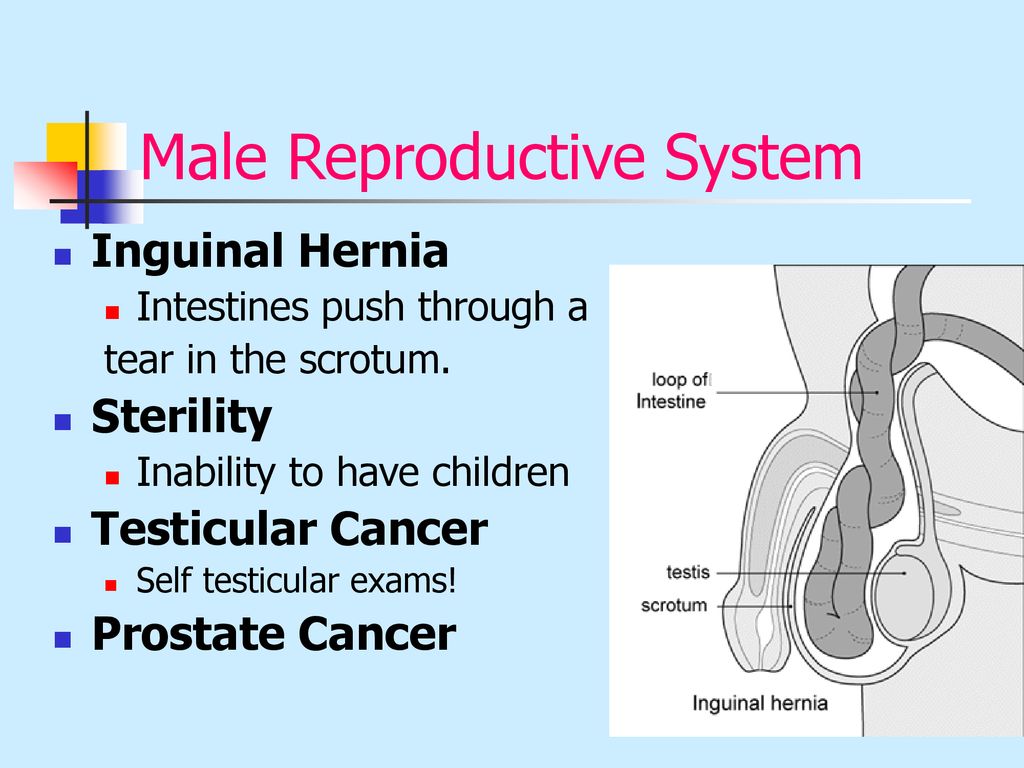
The Role of Hormones in Male Reproduction
Hormones play a crucial role in male reproductive function, regulating everything from sperm production to sexual behavior. The main hormones involved in male reproduction include:
- Testosterone: The primary male sex hormone
- Follicle-stimulating hormone (FSH): Stimulates sperm production
- Luteinizing hormone (LH): Triggers testosterone production
- Gonadotropin-releasing hormone (GnRH): Controls the release of FSH and LH
How do these hormones interact to regulate male reproduction? The process involves a complex feedback system:
- GnRH is released by the hypothalamus, stimulating the pituitary gland
- The pituitary gland releases FSH and LH
- LH stimulates Leydig cells in the testes to produce testosterone
- FSH and testosterone work together to promote sperm production
- Testosterone levels provide feedback to the hypothalamus and pituitary, regulating hormone release
This hormonal interplay ensures the proper functioning of the male reproductive system, maintaining sperm production, libido, and secondary sexual characteristics throughout a man’s life.

Common Disorders of the Male Reproductive System
While the male reproductive system is remarkably efficient, it can be affected by various disorders. Some common issues include:
- Erectile dysfunction: Difficulty achieving or maintaining an erection
- Prostate enlargement: Often occurs with age, affecting urination
- Testicular cancer: The most common cancer in young men
- Infertility: Can be caused by low sperm count or poor sperm quality
- Sexually transmitted infections: Can damage reproductive organs if left untreated
Regular check-ups and maintaining a healthy lifestyle can help prevent or detect these issues early. Many reproductive disorders are treatable when caught in their early stages.
The Importance of Male Reproductive Health
Maintaining good reproductive health is crucial for overall well-being and fertility. Some key aspects of male reproductive health include:
- Regular self-examinations: Checking for lumps or changes in the testicles
- Healthy lifestyle: Proper diet, exercise, and avoiding harmful substances
- Safe sex practices: Using protection to prevent STIs
- Stress management: Chronic stress can affect hormone levels and fertility
- Regular check-ups: Visiting a healthcare provider for routine screenings
By taking care of their reproductive health, men can ensure optimal function of their reproductive system, maintain fertility, and reduce the risk of developing serious health issues.

Advances in Male Reproductive Medicine
The field of male reproductive medicine has seen significant advancements in recent years. Some notable developments include:
- Improved fertility treatments: Such as intracytoplasmic sperm injection (ICSI)
- Hormone replacement therapies: For men with low testosterone levels
- Minimally invasive surgical techniques: For treating conditions like varicocele
- Gene therapy: Potential future treatments for genetic causes of infertility
- Stem cell research: Exploring possibilities for generating sperm from stem cells
These advancements offer hope for men facing reproductive challenges and continue to expand our understanding of male reproductive biology.
The Role of Nutrition in Male Reproductive Health
Proper nutrition plays a vital role in maintaining male reproductive health. Certain nutrients are particularly important for optimal reproductive function:
- Zinc: Essential for sperm production and testosterone synthesis
- Vitamin C: An antioxidant that protects sperm from damage
- Omega-3 fatty acids: May improve sperm quality and motility
- Selenium: Important for sperm development and testosterone production
- Vitamin D: May increase testosterone levels and improve sperm quality
A balanced diet rich in fruits, vegetables, whole grains, and lean proteins can provide these essential nutrients. Some men may benefit from dietary supplements, but it’s important to consult with a healthcare provider before starting any new regimen.

The Impact of Environmental Factors on Male Reproduction
Environmental factors can significantly influence male reproductive health. Some key environmental concerns include:
- Endocrine disruptors: Chemicals that interfere with hormone function
- Heat exposure: Excessive heat can impair sperm production
- Radiation: Both ionizing and non-ionizing radiation can damage sperm
- Air pollution: May affect sperm quality and fertility
- Occupational hazards: Certain jobs may expose men to reproductive toxins
Awareness of these factors and taking steps to minimize exposure can help protect male reproductive health. This may include using protective equipment at work, avoiding excessive heat exposure to the testicles, and choosing products free from known endocrine disruptors.
The Future of Male Reproductive Research
Research in male reproductive biology continues to evolve, with several exciting areas of study on the horizon:
- Male contraception: Developing new, reversible methods of birth control for men
- Artificial sperm: Creating functional sperm cells from stem cells
- Epigenetics: Understanding how environmental factors influence gene expression in sperm
- Microbiome research: Exploring the role of the male reproductive tract microbiome
- Personalized medicine: Tailoring treatments based on individual genetic profiles
These areas of research hold promise for improving male reproductive health, treating infertility, and developing new contraceptive options. As our understanding of male reproduction grows, so too does our ability to address reproductive challenges and enhance overall reproductive health.
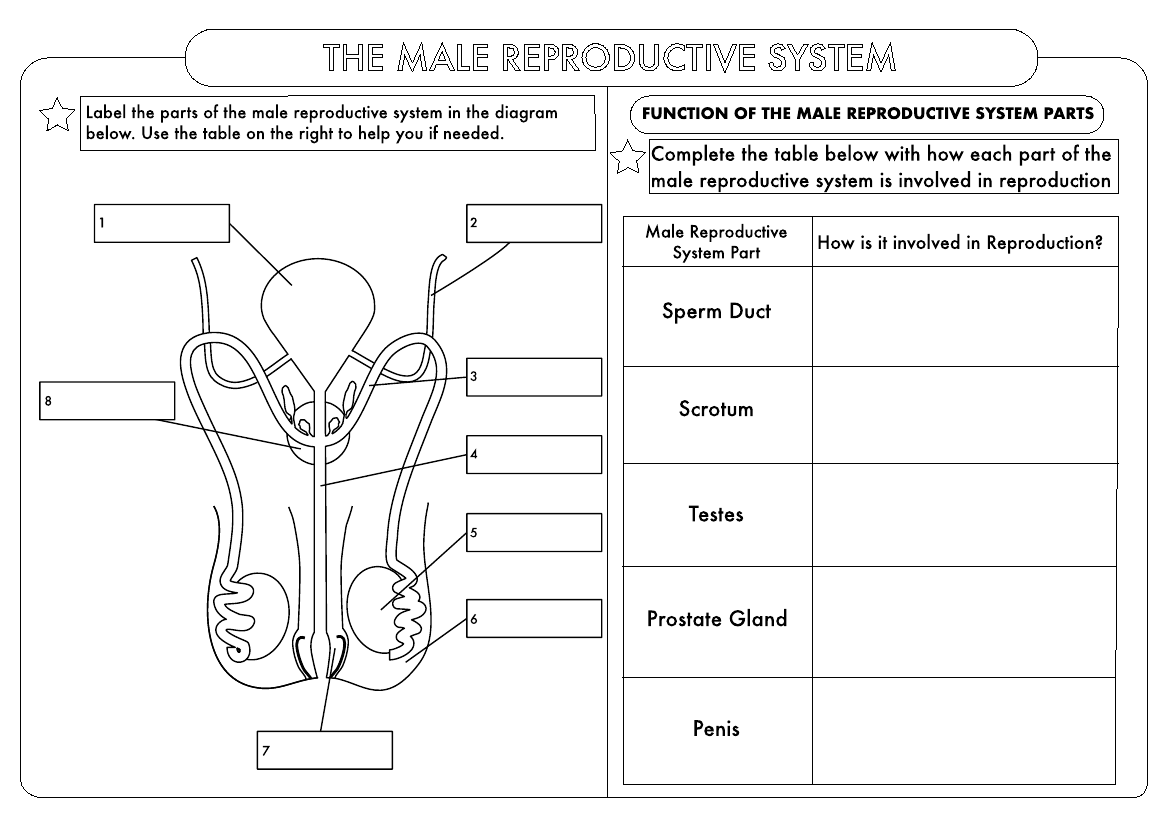
Human reproductive system | Definition, Diagram & Facts
male and female reproductive systems
See all media
- Key People:
- Gabriel Fallopius
George Washington Corner
Reinier de Graaf
- Related Topics:
- zygote
gonad
gamete
female reproductive system
male reproductive system
See all related content →
human reproductive system, organ system by which humans reproduce and bear live offspring. Provided all organs are present, normally constructed, and functioning properly, the essential features of human reproduction are (1) liberation of an ovum, or egg, at a specific time in the reproductive cycle, (2) internal fertilization of the ovum by spermatozoa, or sperm cells, (3) transport of the fertilized ovum to the uterus, or womb, (4) implantation of the blastocyst, the early embryo developed from the fertilized ovum, in the wall of the uterus, (5) formation of a placenta and maintenance of the unborn child during the entire period of gestation, (6) birth of the child and expulsion of the placenta, and (7) suckling and care of the child, with an eventual return of the maternal organs to virtually their original state.
For this biological process to be carried out, certain organs and structures are required in both the male and the female. The source of the ova (the female germ cells) is the female ovary; that of spermatozoa (the male germ cells) is the testis. In females, the two ovaries are situated in the pelvic cavity; in males, the two testes are enveloped in a sac of skin, the scrotum, lying below and outside the abdomen. Besides producing the germ cells, or gametes, the ovaries and testes are the source of hormones that cause full development of secondary sexual characteristics and also the proper functioning of the reproductive tracts. These tracts comprise the fallopian tubes, the uterus, the vagina, and associated structures in females and the penis, the sperm channels (epididymis, ductus deferens, and ejaculatory ducts), and other related structures and glands in males. The function of the fallopian tube is to convey an ovum, which is fertilized in the tube, to the uterus, where gestation (development before birth) takes place.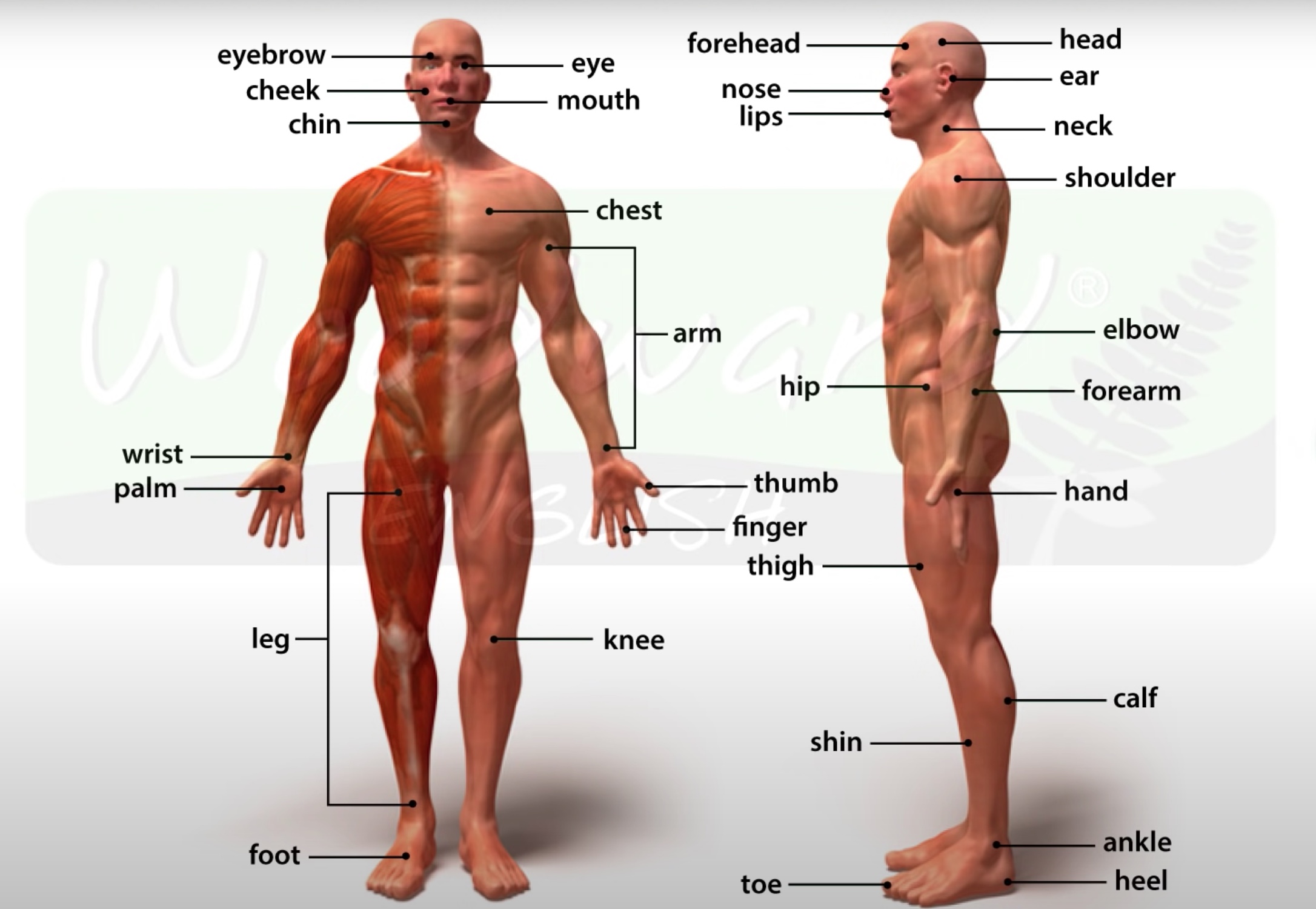 The function of the male ducts is to convey spermatozoa from the testis, to store them, and, when ejaculation occurs, to eject them with secretions from the male glands through the penis.
The function of the male ducts is to convey spermatozoa from the testis, to store them, and, when ejaculation occurs, to eject them with secretions from the male glands through the penis.
At copulation, or sexual intercourse, the erect penis is inserted into the vagina, and spermatozoa contained in the seminal fluid (semen) are ejaculated into the female genital tract. Spermatozoa then pass from the vagina through the uterus to the fallopian tube to fertilize the ovum in the outer part of the tube. Females exhibit a periodicity in the activity of their ovaries and uterus, which starts at puberty and ends at the menopause. The periodicity is manifested by menstruation at intervals of about 28 days; important changes occur in the ovaries and uterus during each reproductive, or menstrual, cycle. Periodicity, and subsequently menstruation, is suppressed during pregnancy and lactation.
This articles describes the organs, both male and female, that are involved in human reproduction.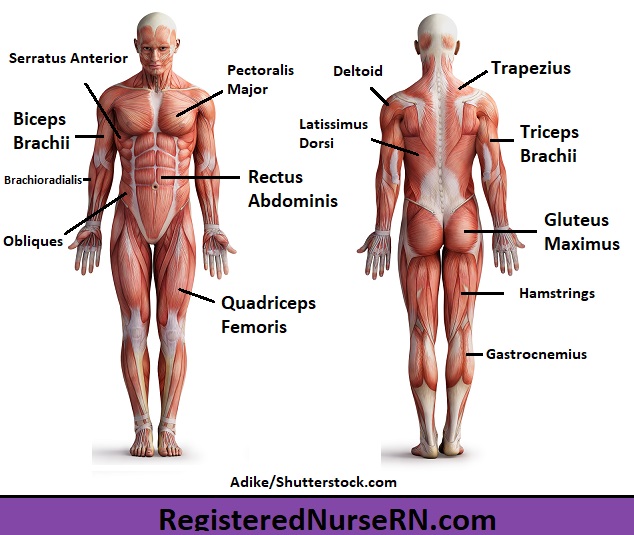 The reproductive process itself is covered in other articles. For a detailed discussion of the series of changes that occur in a woman’s body as her fetus develops, see pregnancy. For a description of the stages of labour and delivery, see parturition. For the development of the unborn child during gestation, see human embryology. For coverage of the many diseases and disorders that can affect the reproductive organs, see reproductive system disease.
The reproductive process itself is covered in other articles. For a detailed discussion of the series of changes that occur in a woman’s body as her fetus develops, see pregnancy. For a description of the stages of labour and delivery, see parturition. For the development of the unborn child during gestation, see human embryology. For coverage of the many diseases and disorders that can affect the reproductive organs, see reproductive system disease.
Britannica Quiz
The Human Body
The sex of a child is determined at the time of fertilization of the ovum by the spermatozoon. The differences between a male and a female are genetically determined by the chromosomes that each possesses in the nuclei of the cells. Once the genetic sex has been determined, there normally follows a succession of changes that will result, finally, in the development of an adult male or female. There is, however, no external indication of the sex of an embryo during the first eight weeks of its life within the uterus.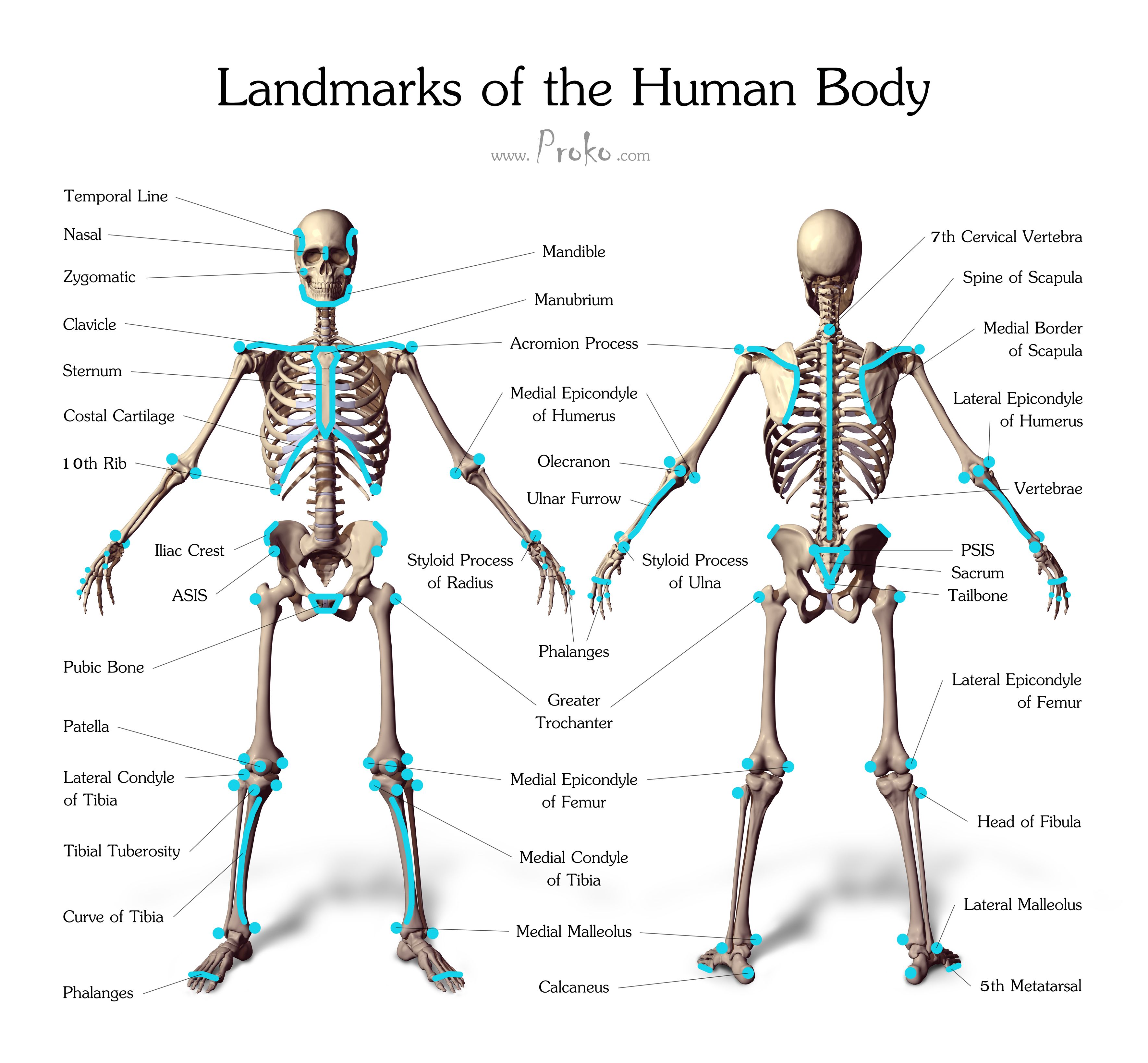 This is a neutral or indifferent stage during which the sex of an embryo can be ascertained only by examination of the chromosomes in its cells.
This is a neutral or indifferent stage during which the sex of an embryo can be ascertained only by examination of the chromosomes in its cells.
The next phase, one of differentiation, begins first in gonads that are to become testes and a week or so later in those destined to be ovaries. Embryos of the two sexes are initially alike in possessing similar duct systems linking the undifferentiated gonads with the exterior and in having similar external genitalia, represented by three simple protuberances. The embryos each have four ducts, the subsequent fate of which is of great significance in the eventual anatomical differences between men and women. Two ducts closely related to the developing urinary system are called mesonephric, or wolffian, ducts. In males each mesonephric duct becomes differentiated into four related structures: a duct of the epididymis, a ductus deferens, an ejaculatory duct, and a seminal vesicle. In females the mesonephric ducts are largely suppressed. The other two ducts, called the paramesonephric or müllerian ducts, persist, in females, to develop into the fallopian tubes, the uterus, and part of the vagina; in males they are largely suppressed.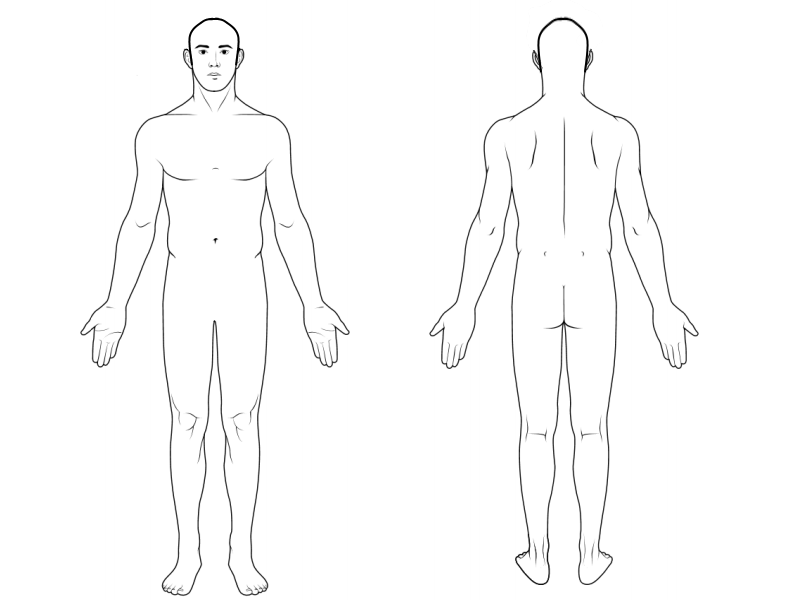 Differentiation also occurs in the primitive external genitalia, which in males become the penis and scrotum and in females the vulva (the clitoris, labia, and vestibule of the vagina).
Differentiation also occurs in the primitive external genitalia, which in males become the penis and scrotum and in females the vulva (the clitoris, labia, and vestibule of the vagina).
Get a Britannica Premium subscription and gain access to exclusive content.
Subscribe Now
At birth the organs appropriate to each sex have developed and are in their adult positions but are not functioning. Various abnormalities can occur during development of sex organs in embryos, leading to hermaphroditism, pseudohermaphroditism, and other chromosomally induced conditions. During childhood until puberty there is steady growth in all reproductive organs and a gradual development of activity. Puberty marks the onset of increased activity in the sex glands and the steady development of secondary sexual characteristics.
In males at puberty the testes enlarge and become active, the external genitalia enlarge, and the capacity to ejaculate develops. Marked changes in height and weight occur as hormonal secretion from the testes increases. The larynx, or voice box, enlarges, with resultant deepening of the voice. Certain features in the skeleton, as seen in the pelvic bones and skull, become accentuated. The hair in the armpits and the pubic hair becomes abundant and thicker. Facial hair develops, as well as hair on the chest, abdomen, and limbs. Hair at the temples recedes. Skin glands become more active, especially apocrine glands (a type of sweat gland that is found in the armpits and groin and around the anus).
The larynx, or voice box, enlarges, with resultant deepening of the voice. Certain features in the skeleton, as seen in the pelvic bones and skull, become accentuated. The hair in the armpits and the pubic hair becomes abundant and thicker. Facial hair develops, as well as hair on the chest, abdomen, and limbs. Hair at the temples recedes. Skin glands become more active, especially apocrine glands (a type of sweat gland that is found in the armpits and groin and around the anus).
In females at puberty, the external genitalia enlarge and the uterus commences its periodic activity with menstruation. The breasts develop, and there is a deposition of body fat in accordance with the usual contours of the mature female. Growth of axillary (armpit) and pubic hair is more abundant, and the hair becomes thicker.
26.1A: Overview of the Male and Female Reproductive Systems
- Last updated
- Save as PDF
- Page ID
- 8233
The human reproductive system functions to produce human offspring, with the male providing sperm and the female providing the ovum.
Learning Objectives
- Summarize the reproductive systems of men and women
Key Points
- The male reproductive system consists of external organs. The testes in the scrotum produce the male gamete, sperm, which is ejaculated in seminal fluid by the penis.
- The female reproductive system primarily consists of internal organs. The female gamete, ovum, is produced in the ovaries and is released monthly to travel to the uterus via the Fallopian tubes.
- Fertilization can occur if the penis is inserted through the vulva into the vagina and sperm is ejaculated towards the cervix. If an ovum is currently in the uterus, it can then be fertilized by sperm that manage to enter the cervix.
- Once fertilized, an ovum becomes a zygote and if all goes well, develops into a fetus in the uterus.
- Natural birth occurs when the fetus is pushed from the vagina after nine months in the uterus.
Key Terms
- fallopian tubes: The Fallopian tubes, also known as oviducts, uterine tubes, and salpinges (singular salpinx) are two very fine tubes lined with ciliated epithelia leading from the ovaries of female mammals into the uterus, via the utero-tubal junction.

- penis: The male sexual organ for copulation and urination; the tubular portion of the male genitalia (excluding the scrotum).
- vagina: A fibromuscular tubular tract which is the female sex organ and has two main functions: sexual intercourse and childbirth.
EXAMPLES
While the ultimate purpose of the human reproductive system is to produce offspring, the proximate purpose is to produce pleasure and induce bonding. This can be seen in our closest relatives, the bonobo chimpanzees, who have sex for a wide variety of reasons including pleasure, bonding, and alleviating tension in addition to producing offspring.
The reproductive system or genital system is a set of organs within an organism that work together to produce offspring. Many non-living substances, such as fluids, hormones, and pheromones, are important accessories to the reproductive system. Unlike most organ systems, the sexes of differentiated species often have significant differences. These differences allow for a combination of genetic material between two individuals and thus the possibility of greater genetic fitness of the offspring.
These differences allow for a combination of genetic material between two individuals and thus the possibility of greater genetic fitness of the offspring.
The Reproductive Process
Human reproduction takes place as internal fertilization by sexual intercourse. During this process, the erect penis of the male is inserted into the female’s vagina until the male ejaculates semen, which contains sperm, into the vagina. The sperm travels through the vagina and cervix into the uterus for potential fertilization of an ovum. Upon successful fertilization and implantation, gestation of the fetus occurs within the female’s uterus for approximately nine months (pregnancy). Gestation ends with labor resulting in birth. In labor, the uterine muscles contract, the cervix dilates, and the baby passes out through the vagina. Human babies and children are nearly helpless and require high levels of parental care for many years. One important type of parental care is the use of the mammary glands in the female breasts to nurse the baby.
The Male Reproductive System
The human male reproductive system is a series of organs located outside of the body and around the pelvic region. The primary direct function of the male reproductive system is to provide the male gamete or spermatozoa for fertilization of the ovum. The major reproductive organs of the male can be grouped into three categories. The first category is sperm production and storage. Production takes place in the testes, housed in the temperature-regulating scrotum. Immature sperm then travel to the epididymis for development and storage. The second category, the ejaculatory fluid-producing glands, includes the seminal vesicles, prostate, and vas deferens. The final category, used for copulation and deposition of the spermatozoa (sperm) within the female, includes the penis, urethra, vas deferens, and Cowper’s gland.
The Human Male Reproductive System: Cross-sectional diagram of the male reproductive organs.
Only our species has a distinctive mushroom-capped glans, which is connected to the shaft of the penis by a thin tissue of frenulum (the delicate tab of skin just beneath the urethra).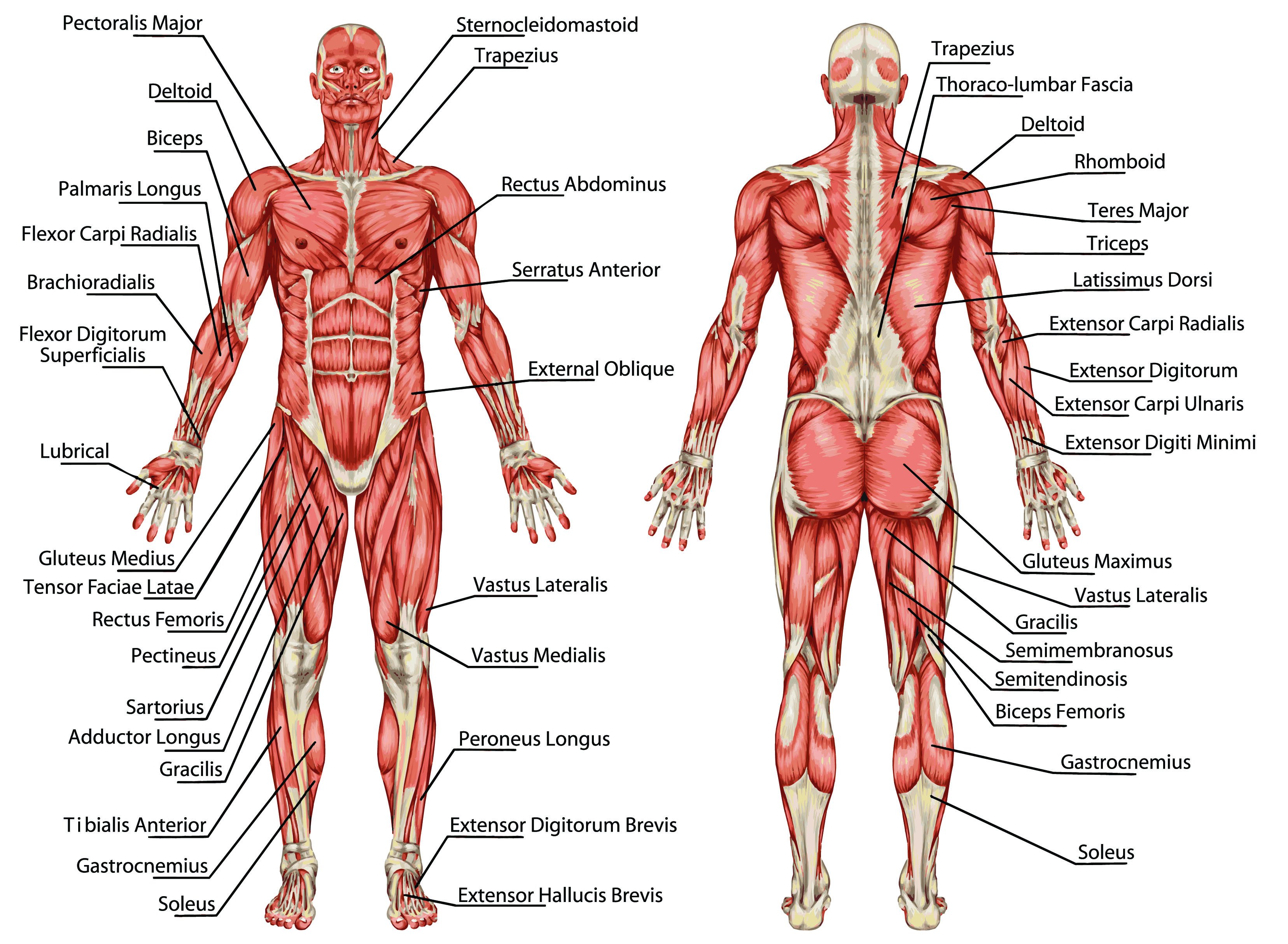 One of the most significant features of the human penis is the coronal ridge underneath the gland around the circumference of the shaft. Magnetic imaging studies of heterosexual couples having sex reveal that during coitus, the typical penis expands to fill the vaginal tract, and with full penetration can even reach the woman’s cervix and lift her uterus. This combined with the fact that human ejaculate is expelled with great force and considerable distance (up to two feet if not contained), suggests that men are designed to release sperm into the uppermost portion of the vagina. This may be an evolutionary adaptation to expel the semen left by other males while at the same time increasing the possibility of fertilization with the current male’s semen.
One of the most significant features of the human penis is the coronal ridge underneath the gland around the circumference of the shaft. Magnetic imaging studies of heterosexual couples having sex reveal that during coitus, the typical penis expands to fill the vaginal tract, and with full penetration can even reach the woman’s cervix and lift her uterus. This combined with the fact that human ejaculate is expelled with great force and considerable distance (up to two feet if not contained), suggests that men are designed to release sperm into the uppermost portion of the vagina. This may be an evolutionary adaptation to expel the semen left by other males while at the same time increasing the possibility of fertilization with the current male’s semen.
The Female Reproductive System
The human female reproductive system is a series of organs primarily located inside the body and around the pelvic region. It contains three main parts: the vagina, which leads from the vulva, the vaginal opening, to the uterus; the uterus, which holds the developing fetus; and the ovaries, which produce the female’s ova. The breasts are also a reproductive organ during parenting, but are usually not classified as part of the female reproductive system. The vagina meets the outside at the vulva, which also includes the labia, clitoris, and urethra. During intercourse, this area is lubricated by mucus secreted by the Bartholin’s glands. The vagina is attached to the uterus through the cervix, while the uterus is attached to the ovaries via the Fallopian tubes. At certain intervals, approximately every 28 days, the ovaries release an ovum that passes through the Fallopian tube into the uterus.
The breasts are also a reproductive organ during parenting, but are usually not classified as part of the female reproductive system. The vagina meets the outside at the vulva, which also includes the labia, clitoris, and urethra. During intercourse, this area is lubricated by mucus secreted by the Bartholin’s glands. The vagina is attached to the uterus through the cervix, while the uterus is attached to the ovaries via the Fallopian tubes. At certain intervals, approximately every 28 days, the ovaries release an ovum that passes through the Fallopian tube into the uterus.
If the ova is fertilized by sperm, it attaches to the endometrium and the fetus develops. In months when fertilization does not occur, the lining of the uterus, called the endometrium, and unfertilized ova are shed each cycle through a process known as menstruation.
The Human Female Reproductive System: The female reproductive system is largely internal.
LICENSES AND ATTRIBUTIONS
CC LICENSED CONTENT, SHARED PREVIOUSLY
- Curation and Revision.
 Authored by: Boundless.com. Provided by: Boundless.com. License: CC BY-SA: Attribution-ShareAlike
Authored by: Boundless.com. Provided by: Boundless.com. License: CC BY-SA: Attribution-ShareAlike
CC LICENSED CONTENT, SPECIFIC ATTRIBUTION
- Reproductive system. Provided by: Wikipedia. Located at: en.Wikipedia.org/wiki/Reproductive_system. License: CC BY-SA: Attribution-ShareAlike
- penis. Provided by: Wiktionary. Located at: en.wiktionary.org/wiki/penis. License: CC BY-SA: Attribution-ShareAlike
- vagina. Provided by: Wikipedia. Located at: en.Wikipedia.org/wiki/vagina. License: CC BY-SA: Attribution-ShareAlike
- fallopian tubes.
 Provided by: Wikipedia. Located at: en.Wikipedia.org/wiki/fallopian%20tubes. License: CC BY-SA: Attribution-ShareAlike
Provided by: Wikipedia. Located at: en.Wikipedia.org/wiki/fallopian%20tubes. License: CC BY-SA: Attribution-ShareAlike - Female Reproductive System. Provided by: Wikimedia. Located at: upload.wikimedia.org/wikipedi…em_lateral.png. License: Public Domain: No Known Copyright
- Male Reproductive System. Provided by: Wikimedia. Located at: upload.wikimedia.org/wikipedi…le_anatomy.png. License: Public Domain: No Known Copyright
- Back to top
- Was this article helpful?
- Article type
- Section or Page
- License
- CC BY-SA
- Show TOC
- no
- Tags

Exciting parts of the body
18+
Readers told us what parts of the male body they find sexually attractive, and our experts explained why.
Parts of the male body that arouse desire are called “sexual zones”. Each person’s idea of them is formed under certain circumstances. “The first concept of a man’s attractiveness is formed on the basis of communication with his father,” explains Lyudmila Gorodnicheva , candidate of psychological sciences. “Since imaginative thinking is formed already in early childhood, it is not surprising that the most attractive objects are those that we see.” As we grow older, the image of the ideal man acquires details: depending on what films we watched and, of course, with whom we talked.
When the idea of a man’s sexuality is formed, there is, in the language of neurolinguistic programming, “anchoring”. “The image is fixed in the mind, therefore, when we see an object that matches the parameters, we immediately feel a desire,” the psychologist sums up.
Interestingly, attention to certain parts of the male body indicates the sexual satisfaction of a woman at a particular moment. If she is not satisfied, there is a sexual starvation, after which an interest invariably flares up in an object that has suitable sexual zones. We tried to figure out what needs, in addition to the basic ones, are indicated by attention to different parts of the male body.
Irina, 29 : “Brown eyes drive me crazy. Especially if their owner is staring at me like a boa constrictor at a rabbit. From such a look, I immediately lose my will.”
ADVERTISING – CONTINUED BELOW
Girls who consider eyes attractive are most likely interested in the inner world of a man. They are ready to more fully and deeply perceive the other person. Tatyana Kochetova does not see an evolutionary reason for preferring one or another eye color – too much in this matter depends on cultural characteristics – but adds: “A long, gaze can characterize an attentive, self-confident person, and these personality traits are an indicator of masculinity and inner strength.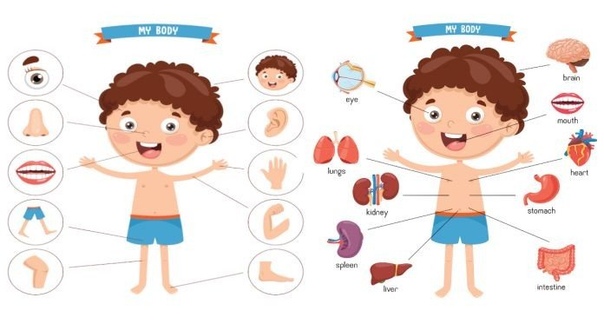 ” Yevgeny Kulgavchuk agrees with his colleague: “It is highly likely that the demonstrated ambitions will be backed up by actions and appropriate behavior.” However, he warns: now there are many men who are specially trained to look this way – not to be, but to be able to impress. That is why it is worth assessing a person comprehensively, because with the “losing my will” approach, you can become a victim of swindlers and pick-up artists. According to Yuri Prokopenko, each woman’s preference for a certain eye color is formed individually and depends on experience and personal associations with a person who made a strong impression in the past. “Girls with the so-called artistic type of character attach great importance to the look of a man,” the sexologist explains. – They tend to imagine ideal princes and unconsciously form in themselves a stereotypical expectation of a fairy tale, romance. Most likely, that is why they cannot, do not want to resist the magnetic male gaze.
” Yevgeny Kulgavchuk agrees with his colleague: “It is highly likely that the demonstrated ambitions will be backed up by actions and appropriate behavior.” However, he warns: now there are many men who are specially trained to look this way – not to be, but to be able to impress. That is why it is worth assessing a person comprehensively, because with the “losing my will” approach, you can become a victim of swindlers and pick-up artists. According to Yuri Prokopenko, each woman’s preference for a certain eye color is formed individually and depends on experience and personal associations with a person who made a strong impression in the past. “Girls with the so-called artistic type of character attach great importance to the look of a man,” the sexologist explains. – They tend to imagine ideal princes and unconsciously form in themselves a stereotypical expectation of a fairy tale, romance. Most likely, that is why they cannot, do not want to resist the magnetic male gaze.
Alina, 25 : “I really like strong, moderately muscular arms. Immediately there is a feeling of confidence in a person – he will hug tightly, will not let go. Even better if the man has hairy wrists and hair peeking out from under his shirt sleeve!”
Immediately there is a feeling of confidence in a person – he will hug tightly, will not let go. Even better if the man has hairy wrists and hair peeking out from under his shirt sleeve!”
Tatyana Kochetova believes that increased attention to hands can also be explained from the point of view of evolutionary psychology. “The functions of this part of the body – to grab, hold, bring food to the mouth, push back, close – are vital, helping a person survive in difficult conditions,” the psychologist explains. Not surprisingly, when evaluating a man’s sexuality, we pay considerable attention to the hands. Yevgeny Kulgavchuk agrees with this opinion: “From a biological point of view, a woman needs to find a strong partner with sufficient resources to protect and feed. Despite emancipation, these rules continue to work to this day.”
With regard to increased hairiness, expert opinions differ here. Yevgeny Kulgavchuk believes that this is a sign of a large amount of testosterone, an indicator of physical strength and activity. And these factors are the most seductive lure for women. Yuri Prokopenko agrees: the density of body hair depends on the level of male sex hormones, but with a caveat: European men tend to be moderately hairy in the armpits, groin and face. “The adrenal cortex produces additional hormones that provoke hair growth on other parts of the body – on the back, legs, chest. Excessive vegetation in this case is a sign of hormonal disorders, and not increased sexuality, ”explains the sexologist. And he voices another psychological need: to be voluntarily enslaved – for someone to control life, the desire to shift responsibility for oneself to someone else.
And these factors are the most seductive lure for women. Yuri Prokopenko agrees: the density of body hair depends on the level of male sex hormones, but with a caveat: European men tend to be moderately hairy in the armpits, groin and face. “The adrenal cortex produces additional hormones that provoke hair growth on other parts of the body – on the back, legs, chest. Excessive vegetation in this case is a sign of hormonal disorders, and not increased sexuality, ”explains the sexologist. And he voices another psychological need: to be voluntarily enslaved – for someone to control life, the desire to shift responsibility for oneself to someone else.
Marina, 32 : “The stomach is what men like the most. Flat, taut, not a beer belly. If with “cubes” on the press – even better!”
According to Yevgeny Kulgavchuk, overweight is often associated not with intellect, but with rudeness, uncouthness. “Fat reduces the activity of a man both in physical competition with other members of the same sex, and in matters of sexual relations,” the psychotherapist sums up.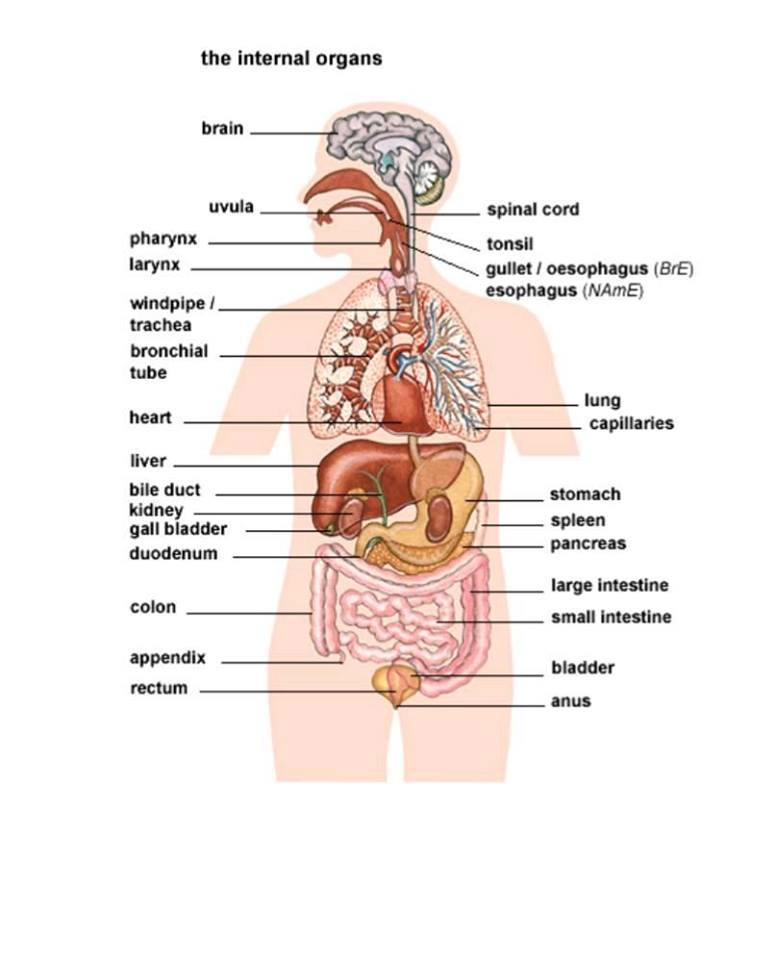 He is supported by Tatyana Kochetova: “Decrepit, saggy has always been associated with illness and old age. Moreover, it is the state of the abdomen that most objectively reflects a person’s attitude to life.” “An athlete who takes care of his appearance, nevertheless, devotes too much time and attention to himself in order to maintain these notorious “cubes,” says Yuri Prokopenko. – Passion for athletes can be a compensation for dissatisfaction with your own figure. Or the woman herself is in good shape and is looking for a worthy partner. In my opinion, the stomach is the most “human” part of the body, by which it is possible to formulate an impression about a man and his lifestyle. After all, maintaining a figure in good shape is worth a lot of work.
He is supported by Tatyana Kochetova: “Decrepit, saggy has always been associated with illness and old age. Moreover, it is the state of the abdomen that most objectively reflects a person’s attitude to life.” “An athlete who takes care of his appearance, nevertheless, devotes too much time and attention to himself in order to maintain these notorious “cubes,” says Yuri Prokopenko. – Passion for athletes can be a compensation for dissatisfaction with your own figure. Or the woman herself is in good shape and is looking for a worthy partner. In my opinion, the stomach is the most “human” part of the body, by which it is possible to formulate an impression about a man and his lifestyle. After all, maintaining a figure in good shape is worth a lot of work.
In conclusion, Yuriy Prokopenko recalls an important point: “I recommend paying attention to the person himself. After all, relationships will have to be built with him, and not with his nose, eyes or stomach. Tatyana Kochetova joins her colleague’s opinion and assures that there are simply no clearly defined standards of sexual attractiveness – even evolutionary psychology does not exclude an individual approach. According to Lyudmila Gorodnicheva, the main thing is to understand the difference between sexual hunger and love: “Often we can be turned on by the sexual zones of a partner, but later, when the first need is satisfied, it will probably turn out that there is neither love nor affection in your relationship. This is worth keeping in mind so as not to succumb to self-deception.
According to Lyudmila Gorodnicheva, the main thing is to understand the difference between sexual hunger and love: “Often we can be turned on by the sexual zones of a partner, but later, when the first need is satisfied, it will probably turn out that there is neither love nor affection in your relationship. This is worth keeping in mind so as not to succumb to self-deception.
Sexiest male body parts – Sex – Sex and relationships
All or almost all men would like to know which parts of the male body are the sexiest according to women. Everyone is interested in what exactly (which part of your body), first of all, the representatives of the opposite sex pay attention to. Or in other words, what exactly is expressed in male sexuality?
10th place – Pronounced shoulders
Women like the deltoid muscles, in their opinion it is a sign of strength. Some are very turned on when a man moves his shoulders, and they see how every muscle on his body stands out. Women like to touch them, and therefore they often massage their boyfriend in this area.
Women like to touch them, and therefore they often massage their boyfriend in this area.
9th place – Athletic chest
Just like us, they look at us and they like our breasts. After all, we don’t care if it’s silicone or mother nature, it doesn’t matter to them either – it’s anabol, hard training or inherited, if only there was a form! Most girls say they don’t want to see a unisex half-ped with saggy nipples in front of them. Perfect breasts are an integral part of women’s sexual fantasies.
8th place – Pumped up biceps
Biceps will not grow on their own. When a woman sees your strong arms, a clearly defined shape of the muscles, when you demonstrate the power of your hands in a T-shirt, it is clear that you take care of yourself and you are not indifferent to how you look. Your hands are ready to help a defenseless woman! A woman is crazy when during sex she is raked into an armful and “smeared on the wall. ”
”
7th place – Sensual lips
It turns out that not only do we want to touch the plump female lips, but many women are also reluctant to touch the sensual male mouth. One girl said: “During a kiss, I bite into him with my lips until they swell, and then ice comes to the rescue.”
6th place – Language
This statement may be shocking, but in a nutshell, the reality is this: women value the tongue like a saliva-producing penis. And if some women like it when they pick out fillings with their tongues, then the bulk like it when … (well, you understand).
5th place – Well-groomed hands
“In the beginning, I always pay attention to the hands of a man and if they are clean and well-groomed, I am ready to go to bed with him. Well, if they look different, then it is probably only suitable for plumbers or auto mechanics. Women are very worried about their tights and delicate organs, which a man can damage with his claws.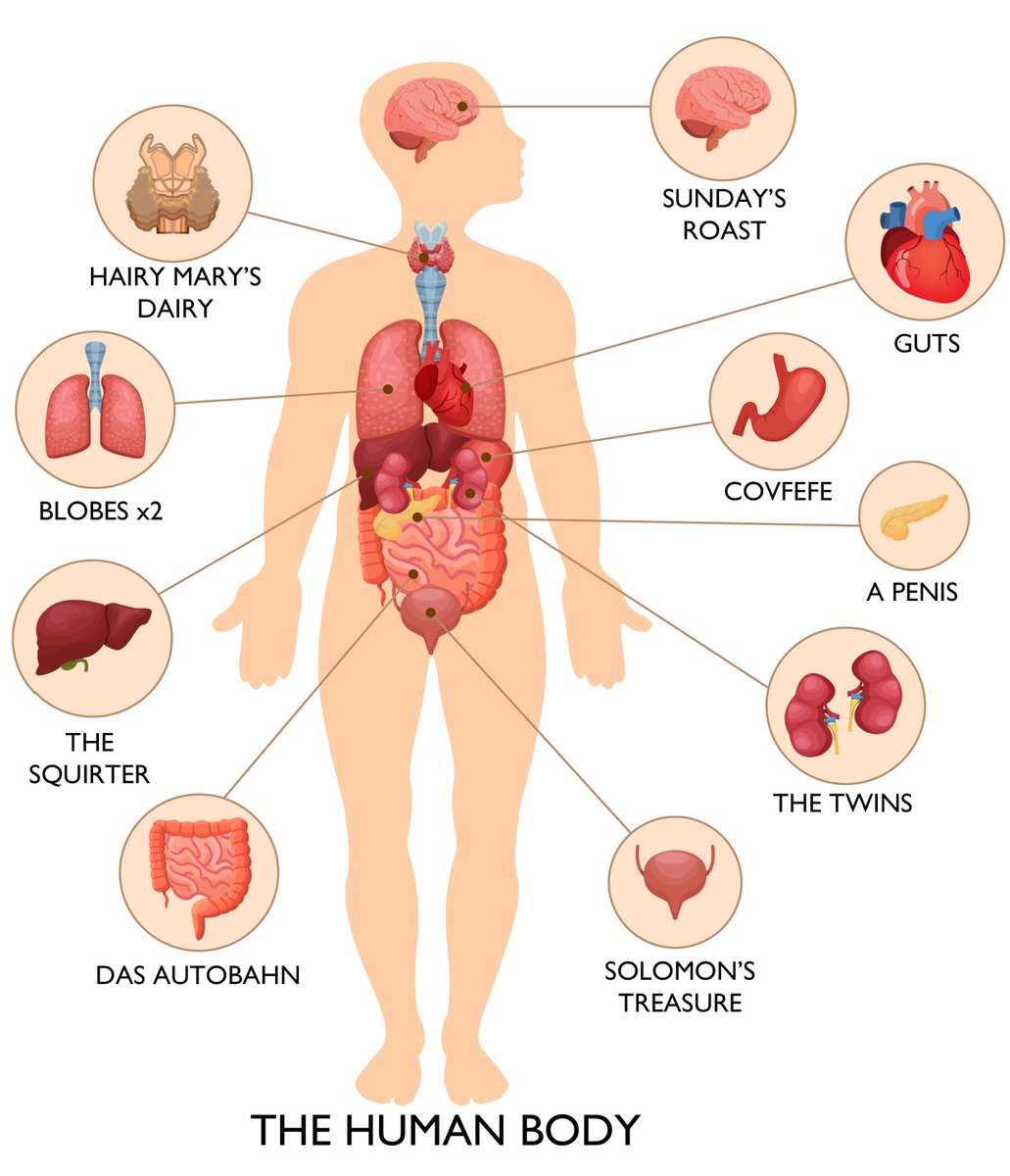
4th place – Narrow hips
“Narrow hips, broad shoulders” is a real man. It has always been believed that women’s hips should be wider than men’s. They have always been jealous of our narrow pelvis, and during sex they like to hold us by our narrow hips.
3rd place – Iron press
Oh, how they rod from a relief press that looks like a washboard! But to achieve this is quite difficult. After all, you, too, are not happy to jump into bed with a fat woman, just as they are not very happy about the fact that you have to twist your stomach to get to your nooks and crannies. In addition, the relief press is subconsciously associated by a woman with a healthy, beautiful and well-groomed penis.
2nd place – Well-groomed cock
It was thought that HE would be in the first place, but it turns out, only the second. Here’s what we learned from our conversations with the girls: cut the hairy forest, so HE will appear younger, thicker and longer (but be careful – it’s worse when only the forest remains).


 Authored by: Boundless.com. Provided by: Boundless.com. License: CC BY-SA: Attribution-ShareAlike
Authored by: Boundless.com. Provided by: Boundless.com. License: CC BY-SA: Attribution-ShareAlike Provided by: Wikipedia. Located at: en.Wikipedia.org/wiki/fallopian%20tubes. License: CC BY-SA: Attribution-ShareAlike
Provided by: Wikipedia. Located at: en.Wikipedia.org/wiki/fallopian%20tubes. License: CC BY-SA: Attribution-ShareAlike